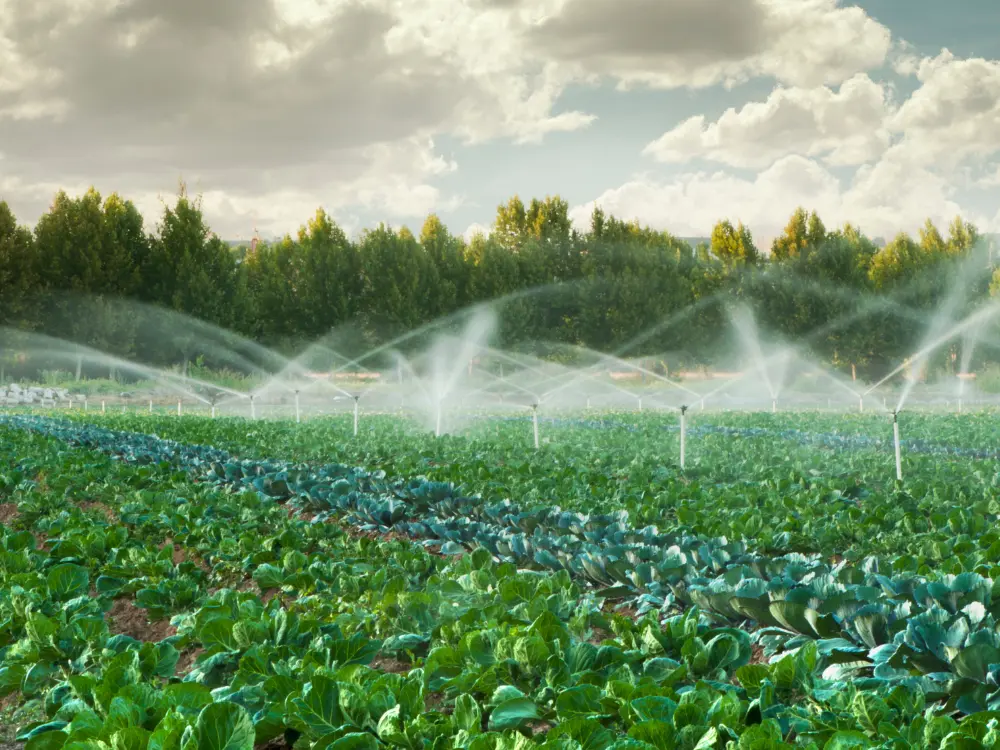Water is the lifeblood of agriculture, and in a country like India, where agriculture accounts for around 80% of total water use, efficient water management is crucial. However, water scarcity has become a growing concern, especially in regions prone to droughts or where groundwater levels are depleting. Traditional irrigation methods, such as flooding fields, often lead to significant water wastage and are not sustainable in the long run. This is where smart irrigation systems come into play, offering a solution that not only conserves water but also boosts crop yields, making farming more efficient and sustainable.
Understanding Smart Irrigation Systems
Smart irrigation systems use advanced technology to optimize the use of water in agriculture. Unlike traditional methods that apply the same amount of water across the entire field, smart irrigation systems deliver water based on the specific needs of each crop and the conditions of the soil. This is achieved through a combination of sensors, weather data, and automated systems that work together to ensure that crops receive the right amount of water at the right time.
Key Components of Smart Irrigation Systems
1. Soil Moisture Sensors
Soil moisture sensors are a critical component of smart irrigation systems. These sensors are placed in the soil at various depths to monitor the moisture levels in real-time. By collecting data on how much water is present in the soil, these sensors help determine when and how much water should be applied. This prevents both over-watering, which can lead to waterlogging and root diseases, and under-watering, which can stress plants and reduce yields.
2. Weather Stations
Weather stations are another essential part of smart irrigation systems. These stations collect data on local weather conditions, including temperature, humidity, wind speed, and rainfall. By analyzing this data, the system can adjust irrigation schedules based on the current and forecasted weather conditions. For example, if rain is expected, the system may delay watering to avoid unnecessary water usage.
3. Automated Irrigation Controllers
Automated irrigation controllers are the brains of the smart irrigation system. They use the data collected from soil moisture sensors and weather stations to control the irrigation process. These controllers can be programmed to water different parts of the field at different times and with varying amounts of water, depending on the needs of the crops. This level of precision ensures that every plant receives the optimal amount of water, leading to healthier crops and higher yields.
4. Remote Monitoring and Control
Many smart irrigation systems come with remote monitoring and control capabilities. Farmers can monitor and adjust their irrigation systems from anywhere using a smartphone or computer. This feature is particularly useful for large farms or for farmers who may not be able to be on-site every day. Remote monitoring allows for quick adjustments to irrigation schedules based on real-time data, ensuring that water is used as efficiently as possible.
Benefits of Smart Irrigation Systems
1. Water Conservation
One of the most significant benefits of smart irrigation systems is their ability to conserve water. By applying water only when and where it is needed, these systems can reduce water usage by up to 50% compared to traditional methods. This is particularly important in regions where water is scarce, as it allows farmers to grow crops with less water, reducing the pressure on local water resources.
2. Improved Crop Yields
Smart irrigation systems not only save water but also improve crop yields. By providing crops with the optimal amount of water, these systems help prevent water stress, which can negatively impact plant growth and productivity. Healthier plants are more resilient to pests and diseases and can produce higher yields, translating into greater income for farmers.
3. Cost Savings
Although the initial investment in smart irrigation systems can be higher than traditional methods, the long-term cost savings are significant. Reduced water usage leads to lower water bills, and the improved efficiency of water application can also reduce the need for fertilizers and pesticides. Over time, these savings can more than offset the initial costs of the system, making it a cost-effective solution for farmers.
4. Sustainability
In a world where sustainability is becoming increasingly important, smart irrigation systems offer a way to reduce the environmental impact of agriculture. By conserving water and reducing the need for chemical inputs, these systems promote more sustainable farming practices. This is not only beneficial for the environment but also helps farmers meet the growing demand for sustainably produced food.
Success Stories in India
Several regions in India have already seen the benefits of smart irrigation systems. For example, in Maharashtra, grape farmers have adopted smart irrigation to manage their water resources more efficiently. By using soil moisture sensors and automated irrigation controllers, these farmers have been able to reduce water usage while improving the quality and quantity of their grape harvests.
In Tamil Nadu, smart irrigation is being used in paddy fields, where water management is critical. The introduction of smart systems has helped farmers save water and increase their yields, providing a solution to the challenges posed by water scarcity and changing climate conditions.
Challenges and the Way Forward
While smart irrigation systems offer numerous benefits, there are still challenges to their widespread adoption in India. The initial cost of setting up these systems can be a barrier for small-scale farmers. Additionally, there is a need for more awareness and training on how to use these technologies effectively.
To overcome these challenges, government initiatives and subsidies can play a crucial role in making smart irrigation systems more accessible to farmers. Additionally, partnerships between technology providers, NGOs, and local communities can help promote the adoption of these systems and provide the necessary training and support.
Conclusion
Smart irrigation systems are a powerful tool for addressing the water challenges faced by Indian agriculture. By using technology to optimize water use, these systems not only conserve precious resources but also boost crop yields and improve farm profitability. As more farmers adopt smart irrigation, India can move towards a more sustainable and resilient agricultural sector, ensuring food security for future generations while protecting the environment.

